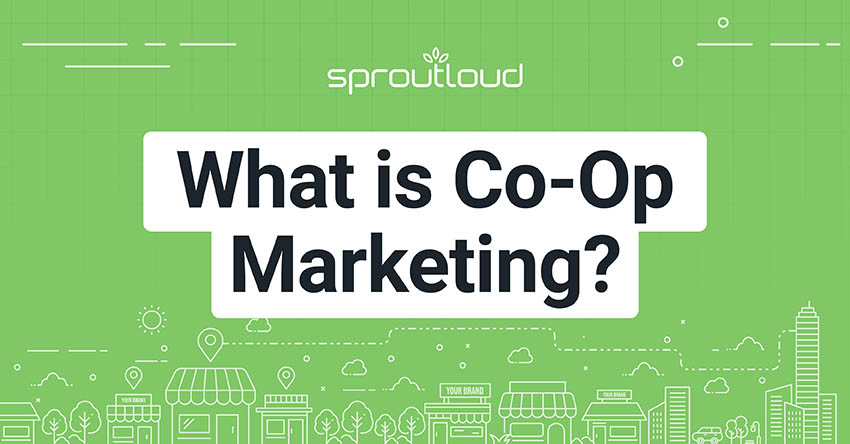
What is Co-Op Marketing?
In the complex world of marketing, co-op marketing emerges as a strategic alliance that bridges the gap between enterprise companies and channel partners who resell their products or services in local markets, such as manufacturers and their local dealers, distributors or retailers. This marketing paradigm involves a symbiotic relationship where both parties — take manufacturers and dealers, for example — collaborate on advertising initiatives, leveraging each other’s strengths to amplify the reach and impact of marketing.
The Mechanics of Co-Op Marketing
At its core, co-op marketing revolves around a shared investment, often led by a major brand or OEM (original equipment manufacturer). For example, manufacturers may allocate funds, promotional products, or advertising resources to local retailers. These resources empower retailers to market products more effectively. The flexibility of this approach allows retailers to tailor their marketing tactics, such as digital media campaigns, social media, or in-store displays, while aligning with the manufacturer’s overarching strategy.
Co-Op Marketing Benefits and Shared Goals
The essence of co-op marketing lies in the mutual benefits it offers. Brands and their channel partners come together, combining their expertise — brands bring in-depth product knowledge while channel partners contribute insights into local consumer behavior and effective sales strategies. This partnership not only fosters innovation but also amplifies brand awareness and brand consistency, crucial for building brand loyalty.
Cost-Effectiveness and Sales Incentives
One of the most significant advantages of co-op marketing is cost reduction. By sharing marketing responsibilities and resources, both brands and their channel partners can execute high-quality campaigns while sharing the related costs. This model incentivizes channel partners — dealers, distributors, retailers, agents, contractors and resellers — to invest in a brand, aligning brand-to-local sales and marketing efforts.
Navigating Co-Op Marketing Challenges
Co-op marketing isn’t without challenges. Enterprise companies often set stringent brand guidelines for how co-op funds are used, which channel partners may find difficult or cumbersome. Aligning the marketing objectives of the brand and their local resellers requires strategic planning, effective communication, and the right MarTech solutions to streamline and simplify processes.
Effective Management of Co-Op Marketing Funds
Managing co-op funds demands meticulous administration and transparent communication. Ensuring that these funds are used effectively and within the agreed parameters is crucial for the success of the campaign. Transparency not only facilitates smoother operations but also aids in meeting regulatory and tax obligations. This is why finding a MarTech solution that automates co-op marketing funds management, as well as claims and reimbursement processes, can be a game-changer.
Designing a Successful Co-Op Marketing Program
Creating a successful co-op marketing program requires looking beyond a traditional claims-and-reimbursement approach. Today, advanced distributed marketing solutions offer innovative instant co-pay options, allowing the brand and the channel partner to immediately pay only their respective portion of co-marketing expenses. This allows channel partners to avoid the burden of covering 100 percent of co-marketing expenses upfront, submitting co-op claims afterward, then waiting weeks for brand approval before receiving reimbursement for the brand’s portion of costs. Brands tend to see more channel partners participating in co-op marketing when they simplify the entire co-op marketing process, allow for some customization of co-marketing, and implement local marketing automation solutions. This approach incentivizes channel partners to opt into brand-approved co-marketing, digital marketing, and traditional media packages. The strategic use of funds to help channel partners execute local marketing and regular communication between the brand and channel partners are essential to achieving brand-to-local marketing goals.
Brand Compliance
Providing clear brand guidelines is crucial to maintaining brand consistency across various marketing channels. These guidelines should cover aspects like logo usage, typography, color schemes, and overall design aesthetics, ensuring that channel partners remain brand compliant in local marketing campaigns, co-marketing collateral and messaging.
Marketing Analytics
The effectiveness of a co-op marketing program is measured by its outcomes. That’s why marketing analytics is an essential part of successful co-op marketing strategies. Regularly tracking key performance metrics and re-evaluating marketing strategies allow both brands and their channel partners to better understand the impact of co-marketing efforts and to make course corrections where improvement is needed.
Co-op marketing presents a unique opportunity for brands and channel partners to collaborate closely, maximizing their marketing potential while minimizing costs. By implementing effective MarTech solutions to help navigate co-op marketing challenges and capitalize on the benefits, brands and their networks of channel partners can make data-driven decisions that lead to measurable outcomes and more traffic, leads and sales in local markets.

